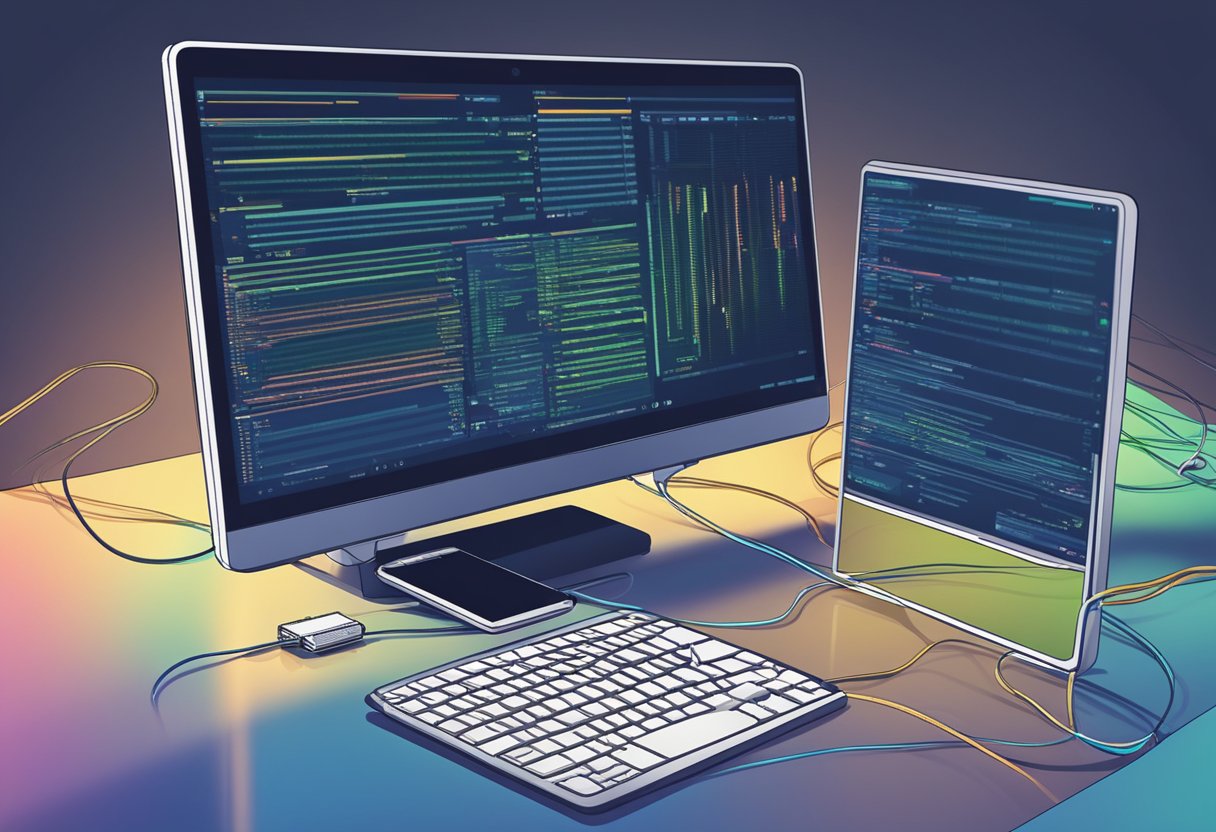React Native is an open-source framework that allows developers to build mobile applications using JavaScript and React. It is a popular choice for creating cross-platform applications, as it allows developers to write code once and deploy it on both iOS and Android platforms. However, before developers can start building with React Native, they need to set up their environment.

Setting up a React Native environment can be a daunting task for developers who are new to the framework. It involves installing several dependencies, configuring Xcode and Android Studio, and setting up a development environment. However, with the right guidance, developers can set up their environment in no time and start building their first React Native application. In this article, we will guide developers through the process of setting up their React Native environment step-by-step.
Índice De Conteúdo
Prerequisites

Operating System Compatibility
Before setting up the React Native environment, it is important to ensure that the operating system is compatible with React Native. React Native supports both macOS and Windows operating systems. However, it is recommended to use macOS for iOS development.
Node.js and npm Installation
Node.js and npm are required for setting up the React Native environment. Node.js is a JavaScript runtime built on Chrome’s V8 JavaScript engine, while npm is the default package manager for Node.js. To install Node.js and npm, visit the official Node.js website and download the latest version for your operating system.
Watchman Installation
Watchman is a tool that watches files and triggers actions when they change. It is used by React Native to detect changes in the code and automatically rebuild the app. To install Watchman, visit the official Watchman website and download the latest version for your operating system.
By ensuring that the operating system is compatible with React Native, installing Node.js and npm, and installing Watchman, the prerequisites for setting up the React Native environment are met.
Setting Up the React Native CLI
To start building mobile apps with React Native, developers need to set up their development environment. This section will guide developers through the process of setting up the React Native CLI.
Installing the CLI
Before creating a new React Native project, developers need to install the React Native CLI globally on their system. The CLI provides a command-line interface to create, build, and run React Native applications.
To install the React Native CLI, developers can use npm, which is the package manager for Node.js. They can open their terminal or command prompt and run the following command:
npm install -g react-native-cli
This command will install the latest version of the React Native CLI globally on the system. Developers can verify the installation by running the following command:
react-native --version
This command should output the version number of the installed React Native CLI.
Creating a New Application
After installing the React Native CLI, developers can create a new React Native project by running the following command:
react-native init <project-name>
This command will create a new React Native project with the specified name. The CLI will generate the necessary files and folders for the project, including the basic app structure, configuration files, and dependencies.
Developers can navigate to the project directory and run the following command to start the development server:
cd <project-name>
npx react-native start
This command will start the Metro Bundler, which is responsible for building the JavaScript bundle and serving it to the app. Developers can run the app on an Android or iOS emulator or a physical device by running the following command:
npx react-native run-android
npx react-native run-ios
This command will build and install the app on the selected platform and start it on the emulator or device.
In conclusion, setting up the React Native CLI is the first step towards building mobile apps with React Native. By following the instructions in this section, developers can install the CLI and create a new React Native project with ease.
Android Development Environment
Setting up the Android development environment is a crucial step towards building React Native applications. In this section, we will discuss the necessary components required to set up the Android development environment.
Java Development Kit
The Java Development Kit (JDK) is a prerequisite for developing Android applications. It is a software development kit used to develop Java applications. React Native requires JDK version 8 or later to be installed on the system.
Android Studio and SDK
Android Studio is the official integrated development environment (IDE) for Android application development. It provides a comprehensive development environment for building Android applications. Android Studio includes the Android SDK, which comprises a set of development tools, libraries, and system images required for Android development.
Virtual Device Setup
A virtual device is an emulator that runs on the computer and simulates a physical Android device. It is used to test and debug applications without the need for a physical device. To set up a virtual device, one needs to open Android Studio and navigate to the AVD Manager. From there, one can create a new virtual device by selecting the device type, system image, and other specifications.
In conclusion, setting up the Android development environment requires installing the JDK, Android Studio, and the Android SDK. Additionally, creating a virtual device is necessary for testing and debugging applications. With these components set up, developers can begin building React Native applications for Android.
iOS Development Environment
Xcode Installation
To develop iOS applications using React Native, developers must have Xcode installed on their Mac machines. Xcode is an integrated development environment (IDE) that provides a comprehensive set of tools for building iOS applications. Xcode can be downloaded for free from the App Store or from the Apple Developer website.
To install Xcode from the App Store, users can simply search for “Xcode” in the App Store and click the “Get” button to download and install the latest version of Xcode. Alternatively, developers can download Xcode from the Apple Developer website by logging in with their Apple ID and navigating to the “Downloads” section.
Once Xcode is installed, developers can open it to verify that it is working properly and to install any additional components that may be required for iOS development.
CocoaPods Dependency Manager
CocoaPods is a dependency manager for iOS and Mac projects that makes it easy to install and manage third-party libraries and frameworks. To install CocoaPods, developers can use the following command in the terminal:
$ sudo gem install cocoapods
Once CocoaPods is installed, developers can create a new React Native project and navigate to the project directory in the terminal. From there, they can use the following command to install the required dependencies:
$ cd /path/to/project
$ pod install
This will install all of the necessary dependencies for the project, including React Native and any additional libraries that have been added to the project’s Podfile.
By following these steps, developers can set up their iOS development environment and begin building React Native applications for iOS devices.
Running Your First App
Once you have set up your React Native development environment, it’s time to run your first app. This section will guide you through the steps needed to start the development server and build your app on a simulator or device.
Starting the Development Server
Before running your app, you need to start the development server. To do this, open a terminal window and navigate to your project directory. Then, run the following command:
npx react-native start
This command will start the Metro Bundler, which is responsible for building your app and serving it to the development server. You should see a message in the terminal indicating that the Metro Bundler has started.
Building the App on a Simulator or Device
Once the development server is running, you can build your app on a simulator or device. To build your app on a simulator, open a new terminal window and navigate to your project directory. Then, run the following command:
npx react-native run-ios
This command will build your app on the iOS simulator. If you want to build your app on an Android emulator, run the following command instead:
npx react-native run-android
This command will build your app on the Android emulator. Make sure you have an emulator set up before running this command.
After running either of these commands, you should see your app running on the simulator or emulator. Congratulations, you have successfully run your first React Native app!
Note that these commands may take a few minutes to complete, especially the first time you run them. Also, make sure that the simulator or emulator is running before attempting to build your app.

